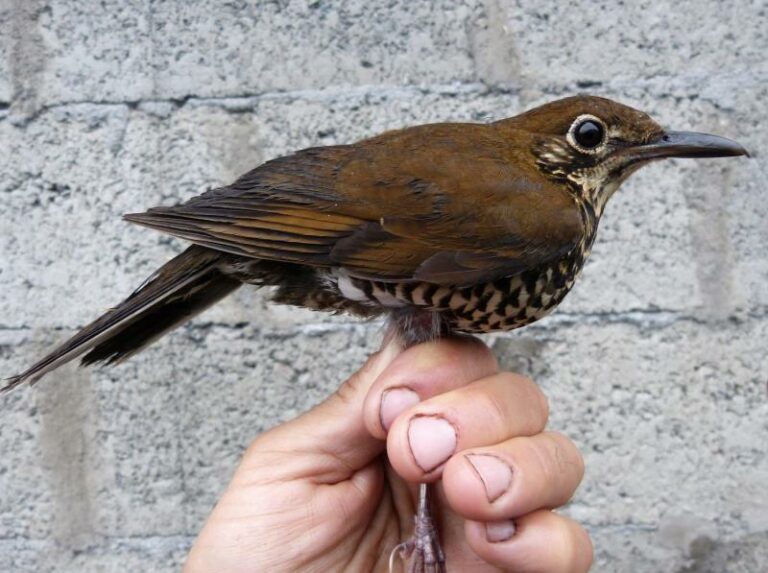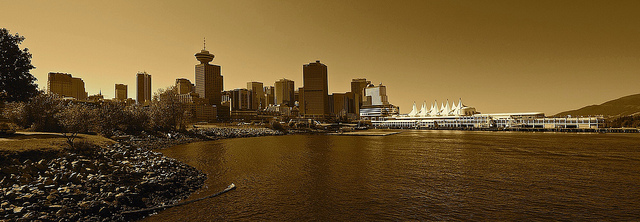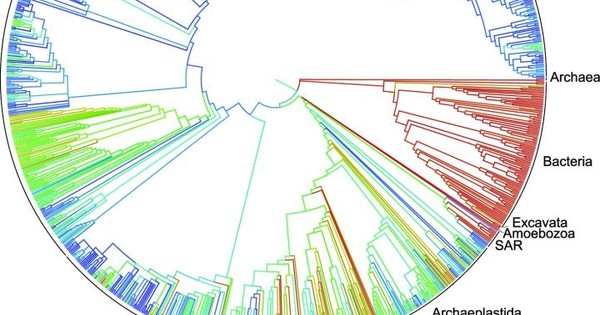Dirt is Better Antidepressant Than Prozac
There’s no denying that standing in the garden and picking your first summer tomato gives you a good feeling. Even in an urban environment a small pot of basil on the windowsill can brighten your day. But is there a scientific reason that getting our hands dirty makes us feel good?
In 2007, Christopher Lowry, associate professor in the Department of Integrative Physiology and Center for Neuroscience at Universtiy of Colorado Boulder, and a team of researchers published an article in Neuroscience that had people wondering if dirt was the new Prozac. The study examined a specific soil bacterium, Mycobacterium vaccae, and its potential role in the regulation of emotional behavior. In other words: did the bacteria have antidepressant qualities?
“Soil, especially soil with abundant organic matter, contains saprophytic bacteria, meaning that they live off of dead and decaying organic matter, such as leaves,” says Lowry. “Humans coevolved with these bacteria over millennia and they have been shown to affect the immune system in a way that suppresses inflammation. This means that these bacteria may be helpful in preventing or treating diseases with excess inflammation.”
So what exactly are diseases with “inflammation?”
“This includes conditions like asthma, but also, perhaps, stress-related psychiatric disorders characterized by elevated inflammation, such as major depressive disorder or post-traumatic stress disorder,” says Lowry.
It’s not so surprising that we may benefit from microorganisms in the soil, given that we need them to live.
The regulation of the immune system is indeed connected to the biodiversity of the natural environment. We benefit from being outdoors and exposed to things like soil and animals, because of the fact that we’re exposed to microorganisms.
“A human is not an individual. We are ecosystems. At least 90% of the cells in a human body are microbes, most of them living in the gut,” says Graham Rook, professor at the Centre for Clinical Microbiology at the University College London. ” These organisms constitute the ‘microbiota,’ and the microbiota should be regarded as an organ, just like your liver or your brain.”
While the organisms that make up that microbiota are inherited – like we inherit genes – there is a proportion of the organisms that come from elsewhere, and that’s where things get interesting.
“An unknown proportion of the organisms that constitute the microbiota come from the environment,” says Rock. “It now seems that the most likely explanation for the health benefits of exposure to farms, dogs in the home, and green space is that the natural environment (including the animals in it) is a resource that provides organisms as we need them.”
Just last year Rook published an article that explored those connections, concluding that the regulation of the immune system is indeed connected to the biodiversity of the natural environment. We benefit from being outdoors and exposed to things like soil and animals, because of the fact that we’re exposed to microorganisms.
The psychological benefit of nature has been well documented. When it comes to being happy or not, many studies show that psychiatric problems are more common in urban than in rural communities. That makes Lowry’s and Rook’s research interesting, as it gives us a better understanding of exactly why being outside, in a garden or on a farm, makes us feel good.
“People usually assume that the health benefits of exposure to green space are due to exercise. In fact two large studies now demonstrate that although exercise is definitely good for you, it does not explain the beneficial effect of green space,” says Rook. “Contact with microbial biodiversity is looking like the most probable explanation for the green space effect.”
So if microorganisms are good for you, how much exposure do you need to have in order to reap the benefits? How many days in the garden do you need to commit to?
That’s what’s still unclear.
“We don’t yet know how much exposure to environmental bacteria (for example, through activities that involve contact with the soil) is enough to confer health benefits,” says Lowry. “It is clear, however, that exposure through breathing or consuming specific types of environmental organisms has the capacity to reduce inflammation and confer health benefits.”
Which means that you now have another reason to go outside and get your hands dirty.
New species of bird discovered in India and China
A new species of bird has been described in north-eastern India and adjacent parts of China by a team of scientists from Sweden, China, the US, India and Russia, led by Professor Per Alström, Uppsala University and Swedish University of Agricultural Science.
The bird has been named the Himalayan Forest Thrush, Zoothera salimalii. The scientific name honours the great Indian ornithologist Dr Sálim Ali (1896-1987), in recognition of his huge contributions to the development of Indian ornithology and nature conservation.
The Himalayan Forest Thrush was first discovered when it was realised that what was considered a single species, the Plain-backed Thrush Zoothera mollissima, was in fact two different species in north-eastern India.
What first caught the attention of the scientists was the fact that the ‘Plain-backed Thrushes’ in the coniferous and mixed forest had a rather musical song. This was in contrast to individuals found on bare rocky ground above the treeline in the same area, as they had a much harsher, scratchier, more unmusical song.
Studies of museum specimens in several countries revealed consistent differences in plumage and structure between birds that could be assigned to either of these two species. It was confirmed that the species breeding in the forests of the eastern Himalayas had no name.
It was suggested that the high-elevation Plain-backed Thrush be called the ‘Alpine Thrush’ instead, while retaining the scientific name of the ‘original’ species, Zoothera mollissima, in accordance with international nomenclatural rules.
Further analyses of plumage, structure, song, DNA and ecology from throughout the range of the ‘Plain-backed Thrush’ revealed that a third species was present in central China. This was already known, but was treated as a subspecies of ‘Plain-backed Thrush’. The scientists called it Sichuan Forest Thrush.
The song of the Sichuan Forest Thrush was found to be even more musical than the song of the Himalayan Forest Thrush.
DNA analyses suggested that these three species have been genetically separated for several million years.
Genetic data from three old museum specimens indicated the presence of yet another unnamed species in China. Future studies are required to confirm this.
The Himalayan Forest Thrush is locally common. It has been overlooked until now because of its close similarity in appearance to the Alpine Thrush.
New bird species are rarely discovered nowadays. In the last 15 years, approximately five new species have been discovered annually on average, mainly in South America. The Himalayan Forest Thrush is only the fourth new bird species described in India since the country achieved its independence (1947).
More information: Paper: dx.doi.org/10.1186/s40657-016-0037-2
Provided by: Uppsala University
How To Turn Into A Tree After You Die: The End Of Cemeteries
We tend to think that there are only 3 main options for what we can do with our bodies once we die. We can either have it buried in a coffin, cremated, or donated to science. There is another option that is available now which completely shatters the traditions of our society and replaces them with a much more practical (and even spiritual) alternative. – Steven Bancarz

Bios Urn is a funerary urn made from biodegradable materials (such as coconut shell and cellulose) that will turn you into a tree after you die. Inside the urn there is a pine seed, which can be replaced by any other seed or plant, and will grow to remember your loved one. Instead of being buried in just another coffin in the ground, we can become part of a forest and give back to our environment.
When planted, the tree seed is nourished by and absorbs the nutrients from the ashes of your body which are contained inside. The urn itself is made from coconut shell and contains compacted peat and cellulose. The ashes are mixed with this, and the seed placed inside. You even have the choice to pick the type of plant you would like to become, depending on what kind of planting space you prefer. Once your remains have been placed into the urn, it can be planted and then the seed germinates and begins to grow.
How A Biodegradable Urn From Bios Works
1. The urn comes assembled and ready to be taken to the place chosen for the regeneration.
2. Remove the seal and the outer packaging of the urn.
3. Put the ashes in the urn’s lower part. Close it with the top part and put the soil with the seed in it.
4. Bury the urn in fertile soil with its top level with the soil surface and water it.
5. In a few days the seed will germinate and your tree will begin to grow.
6. The tree will continue to grow year after year.

I think its pretty cool that we have the option of replacing cemeteries (which usually feel lifeless and cold) with forests that are teeming with life. The cool thing is, they have bios urns available for your pets as well.
If you would like to contribute to a more sustainable world by purchasing a Bios Urn for yourself, a loved one, or a pet, or if would would like to learn more about them, you can do so by click HERE.
Source: UrnaBios.com
Passionately Angry Grandma Teaches The Importance Of Local Organic Farming.
The United Nations has said that local organic farming is indeed, the solution to feeding the world. I suppose I understand for some people to question that… But if you need to hear more, than take it from someone’s granny. https://www.youtube.com/watch?v=EQcR1L3zUW4
Vancouver commits to run on 100% renewable energy
Vancouver has become the latest city to commit to running on 100% renewable energy. The city of 600,000 on Canada’s west coast aims to use only green energy sources for electricity, and also for heating and cooling and transportation.

Cities and urban areas are responsible for 70-75% of global CO2 emissions and that’s where “real action on climate will happen” said Park Won-Soon, Mayor of Seoul, South Korea at the ICLEI World Congress 2015, the triennial sustainability summit of local governments where Vancouver made the announcement.
“We are the green tide coming together to save the world from climate change,” Park said to nearly 15,000 members of local government including more than 100 mayors.
Andrea Reimer, Vancouver’s deputy mayor told the Guardian: “There’s a compelling moral imperative but also a fantastic economic case to be a green city.” The 100% goal is likely to be set for a target year of 2030 or 2035 for heating/cooling, with transport taking until 2040 to 2050. These could happen sooner with national and provincial government support.
People and businesses want to live and work in clean and green urban areas, said Reimer, adding that whoever develops expertise in shifting to 100% renewable energy will own the 21st century.
Vancouver can achieve 100% renewable electricity in a few years but heating, cooling and transportation will take longer. The city’s ambition is to be the world’s greenest city by 2020 despite the fact Canada has had one of “the most environmentally irresponsible national governments” for the last 10 years, she said.
Park announced that Seoul, with 11 million people and growing fast, will reduce its energy use and increase renewable generation, including rolling out 40,000 solar panels to households by 2018 and 15,000 electric vehicles. By 2030 it is hoped that CO2 emissions will be cut by 40%.
More than 50 cities have announced they are on their way to 100% renewable energy including San Diego and San Francisco in California, Sydney Australia, and Copenhagen. Some are aiming for 2020, others by 2030 or 2035.
Some, like Reykjavik, Iceland, are already there for electricity and heat. The entire country of Costa Rica was powered by renewables for 75 consecutive days this year.
“Just three years ago we’re saying 100% renewable really is possible, now many cities and regions are doing it,” Anna Leidreiter, coordinator of the Global 100% RE Alliance – an international alliance of organisations pushing for a shift away from fossil fuels.
If large utilities or energy companies are in control it will slow down attempts to tackle climate change, Leidreiter said. “The business model for renewables is completely different, it should benefit people not corporations.”
Ten Reasons Why Soils will Save the World
Contribute to the global effort to restore soil functions which have been destroyed CLICK HERE Healthy, fully functioning soils will: 1. Provide highly nutritious food without the use of chemical inputs. 2. Solve the health crisis through strengthening the human biome. 3. Hold huge amounts of water and so prevent the flooding …
Reversing Climate Change – Why Soil will Save the World
Can we do it? Is it already too late? Many of us are wondering how we can possibly turn the juggernaut of limited industrial profit-based materialism around. Time to stop wondering and worrying—yes it is possible—and we are already doing it. Although the statement “the answer lies in the soil” seems too simplistic, this time …
Shark-tracking technology instead of shark culling will keep swimmers safe in Australia
In the past few years, calls for conservation and protection of sharks have done a great job of spreading awareness of how many more sharks are killed by humans by things like shark finning or longline fishing than humans are killed by sharks. Organizations like OCEARCH have engaged the public and made them feel a connection with individual sharks that they’re tracking, making it cool to love sharks, especially great whites.
Despite all of that progress, many people still fear sharks, so much so that they believe killing them is the answer to shark attacks. In Australia, where shark attacks happen each year during the summer, that reaction has actually been government-sanctioned. In Western Australia, a program for killing sharks was instituted last year over three months where lines of baited hooks were strung off shore to catch sharks and fishermen were hired to kill sharks they saw over 10 feet in length. The program suffered from backlash and luckily was dropped, but not before 170 sharks were caught and 50 killed, none of which were species that had actually been responsible for attacks.
The state of New South Wales has sought a better solution — one that protects both sharks and swimmers. The state announced that they will be investing $16 million in a variety of shark-tracking technologies. Starting in December, which is the beginning of summer in Australia, drones and helicopters will monitor the waters for shark activity and help with shark-tagging. Tagged sharks will be tracked by 20 4G listening stations that will be placed along the coast with more stations concentrated in areas where most people swim and shark attacks are known to happen.
The data collected will be available to the public on an app called SharkSmart so that they can see the location of sharks in real time.
There will be $7 million set aside for research on additional measures of how to keep the beaches safe and protect sharks.
“We don’t cull sharks in New South Wales,” Minister for Primary Industries Niall Blair told the Australian Broadcasting Company. “That’s why we’ve gone for a look into some of the new technologies and other suites of measures we can implement, and that’s what this response is about. It’s been led by our scientists.”
Science is definitely on the side of using these types of technologies instead of killing sharks. Scientists have pointed out that killing off top predators causes drastic changes in an ecosystem where prey populations increase. Recent research even suggests that an increase in prey species would lead to an increase in carbon dioxide being released from where its stored in the seabed.
The Plan to Make California Wet By Bringing Back Beavers
Ending the drought in the West will require rain- not too much rain-and smarter ways to collect and store that water. But something else that can keep things moist? Believe it or not: Beavers.
According to a story in Water Deeply, a group of ecologists have a plan to help repopulate the Central Coast of California with Castor canadensis, the large beavers which once roamed the state in great numbers. (Not to be confused with their ancestors, giant beavers that were seven feet long.) The idea is that beavers are nature’s hydrologists, engineering the way that water travels through the landscape:
“Beavers aren’t actually creating more water, but they are altering how it flows, which creates benefits through the ecosystem,” says Michael Pollock, an ecosystems analyst and beaver specialist at the National Marine Fisheries Service Northwest Science Center.
Beavers were nearly eradicated by humans because they were interfering with our logging and fishing industries. But that’s exactly why beavers need to return. Rivers and streams that have been diverted by humans are designed to remove water quickly from the watershed, destroying local habitats for animals and making it more difficult for an ecosystem to recover from drought. Beavers build infrastructure which help to slow the flow of water, letting it recharge local aquifers, and preventing erosion which helps keep plants alive.
Not everyone is a fan of the Bring Back the Beaver campaign. Ecologists can’t agree where beavers originally lived, for one, so they aren’t sure where they should be reintroduced. And they don’t want to end up with an invasive species, which is what happened in South America. But some scientists aren’t waiting around for a consensus. The Yurok Tribal Fisheries Program is taking matters into its own hands, hiring humans to build their own beaver-like structures to mimic the rodents’ beneficial environmental impact. It sounds like a dam good idea.
[ Water Deeply]
Local Brazilian Start-Ups Challenge Status Quo; Experiment with New Ways of Doing Business
As Latin America’s largest economy and the host of the 2016 Olympic Games, Brazil is a regular fixture in international news. It’s also widely recognized for its agenda on sustainable development issues, especially for reducing deforestation and pioneering clean energy. However, progress remains uneven as the country is struggling to come to terms with one of the worst droughts in history, a chain of corruption scandals and continuing dependence on fossil fuels.
SustainAbility recently met with Álvaro Almeida and Rúbia Piancastelli of report:sustentabilidade, Brazil-based sustainability advisory firm and organizer of Sustainable Brands Rio, to talk about the country’s changing sustainability landscape.
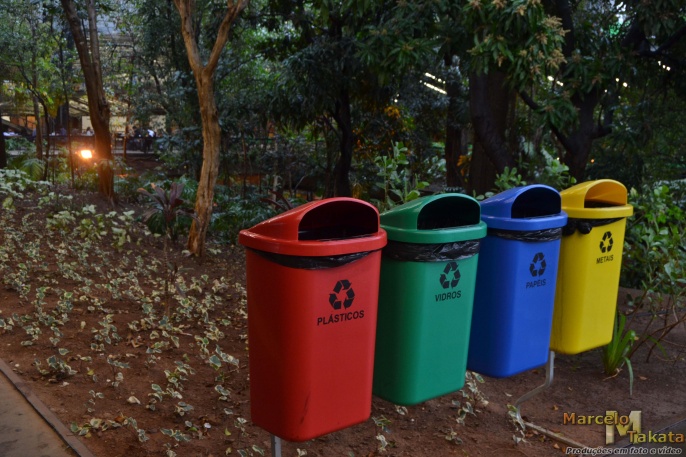
Aiste Brackley: How would you describe the current corporate sustainability landscape in Brazil? What were the dominant themes at this year’s conference?
report:sustentabilidade: With our conference, we seek to push the boundaries of conversation about corporate sustainability in Brazil, challenging ourselves and businesses to imagine what is possible. This year we decided that it was the right time to explore the topics of circular economy and innovation. While many Brazilian companies are working on reducing waste, their thinking predominantly remains embedded in linear models. We would like to challenge companies to think how the circular approach could be integrated into a business model from the very beginning. It is an entirely new way of thinking about design and production.
We also think that Brazilian businesses are ready for a more rigorous conversation about the sharing economy and business model innovation in large companies. This question is especially relevant in the context of the increasingly vibrant social innovation scene. The start-up scene is burgeoning in Brazil with many of them offering innovative solutions that large companies could potentially adopt and scale.
Could you share some examples of innovative corporate sustainability strategies by local companies?
Probably the most widely known example is that of the local beauty products manufacturer Natura. It is leading the field by setting ambitious net positive goals and planning its sustainability strategy as far as 2050. Coca-Cola and Natura are now jointly working with local açai growers in the Amazon to improve their livelihoods and reduce deforestation, a great example of collaboration between large companies.
Another interesting case is , Brazil’s largest retailer, which has also been a leader on sustainability issues. GPA has pioneered a progressive model of working with communities in the Rio de Janeiro and San Paolo neighborhoods, where its supermarkets are located.
In a way, many sustainability leadership examples in Brazil point to collaboration. Getting companies to unite their efforts, seeking synergies and common ground between parallel initiatives will be key to achieving impact.
Our surveys show that Latin America is one of the few regions where local companies dominate sustainability leadership rankings. In many other parts of the world, Unilever and Patagonia are universally seen as dominant players.
Yes, we also see that trend. We ran a survey of conference participants and Natura was overwhelmingly regarded to be the front-runner, with Itaú Unibanco and Unilever taking the second and third spots, respectively.
While we are seeing a lot of progress, for many businesses integrating sustainability into core operations remains to be a major challenge. It is often coupled with lack of a long-term vision and a focus on immediate, short-term issues.
To what extent is this absence of long-term perspective a result of relatively nascent corporate sustainability agendas? Or is it rather a consequence of the current political and economic climate?
Economic and political climate is very important but many Brazilian companies are also facing a challenge of progressing from the very basic understanding of sustainability as simply mitigating negative effects to actually creating net positive impact. I believe this transition is the next big mission for Brazilian companies.
The current economic crisis and corruption scandals have a big impact on business and especially on local companies that primarily rely on the Brazilian market. While global companies are also impacted, they are more resilient to these fluctuations. In their sustainability strategy, most multilateral corporations including Dow Chemical, Unilever, L’Oréal, rely heavily on guidance from corporate headquarters. However, in the past couple of years we have seen the Brazilian branches of some large international companies adopt sustainability strategies that are uniquely designed to address local challenges in Brazil, and that is a very welcome development.
What other sustainability issues are now top-of-mind for companies in Brazil?
Recent corruption scandals have had an effect on many aspects of life in Brazil, including business. Just like in so many other parts of the world, water scarcity is a major concern. The current water crisis is increasingly being linked by scientists to deforestation in the Amazon, another major challenge facing the country. Reducing waste is also a major issue on the corporate sustainability agenda. New environmental regulations, introduced a few years ago, are forcing companies to introduce new measures to reduce waste and rethink packaging. There is also a lot of interest by Brazilian companies in Sustainable Development Goals, with many pursuing partnerships through the UN Global Compact.
And while the Brazilian government is heavily invested in lead-up negotiations to the UN climate change conference in Paris (COP21), for most companies, the energy conversation is first and foremost about efficiency. Our economy remains to be heavily reliant on fossil fuels and hydropower and regulatory incentives are still lacking to advance other forms of renewable energy.
What is the next frontier for Brazilian companies?
Brazilian companies understand well the relevance of CSR and in the last 15 years have made a lot of progress improving sustainability management and embedding it in their governance. But I believe that the understanding of corporate responsibility remains limited. The next step for companies is to create solutions to the challenges that our society faces today and transform those challenges into business opportunities. This is the next big frontier and we are already seeing many promising examples that this transformation is under the way.
This is the third installment in a series of four blogs about Latin America. To find out more about sustainability issues shaping the debate in Latin America, view the presentation deck and listen to the recording of our mid-year Trends webinar. And, you can read our first and second installments of the series, too. For over 25 years SustainAbility has provided companies with timely intelligence and interpretation of emerging sustainability issues and trends. For more information about our bespoke trends service and how your company can benefit from it, please contact Aiste Brackley.
NASA confirms that liquid water flows on Mars
Liquid water likely exists on the surface of Mars during the planet’s warmer seasons, according to new research published in Nature Geosciences. This revelation comes from new spectral data gathered by NASA’s Mars Reconnaissance Orbiter (MRO), a spacecraft that studies the planet from orbit. The orbiter analyzed the chemistry of weird dark streaks that have been known to appear and disappear seasonally on the Martian surface. The analysis confirms that these streaks are formed by briny – or salty – water flowing downhill on Mars.
NASA has advertised these findings as the solution to a major Mars mystery: does the Red Planet truly have liquid water on its surface? Researchers have known that water exists in ice form on Mars, but it’s never been confirmed if water can remain in a liquid state. The space agency is claiming that we now have that answer.
NASA has advertised these findings as the solution to a major Mars mystery
This isn’t the first study to suggest liquid water is present in some form on Mars. Scientists have theorized for years that Mars was once home to a large ocean more than 4 billion years ago. And recent findings from the Mars Curiosity rover suggest that liquid water exists just underneath the Martian surface. The discovery of water on Mars has almost become a joke among planetary scientists. Alfred McEwan, a planetary geologist at Arizona State University who also worked on this research, wrote in Scientific American that the studies have become extremely commonplace: “Congratulations-you’ve discovered water on Mars for the 1,000th time!” he joked.
Today’s findings seem to offer more direct evidence of liquid water than most, though the study only confirms what NASA has long suspected – that flowing liquid water forms the strange, dark streaks that have been observed on Mars. These streaks – called recurring slope linae – were first observed by the MRO spacecraft in 2010. The lines are blackish and narrow at less than 16 feet across. During the warmer seasons, the streaks grow thicker and longer; they then fade and shrink at times when Mars is colder.

This led scientists to believe years ago that perhaps water and salt were involved in the creation of these lines. “[The streaks] loved forming at temperatures that were right for liquid water to exist,” study author Lujendra Ojha, a graduate student at Georgia Tech, told The Verge.
The average temperature on Mars is a frigid -80 degrees Fahrenheit, but on a summer day near the equator, the temperature can reach up to 70 degrees Fahrenheit. Ojha and his team speculated that when conditions are warm enough, liquid water filled with perchlorates – a type of salt – flow downhill on the planet’s sloping geological features. Together, water and perchlorates form a brine solution, which has a much lower freezing point than water. This allows the brine to stay in a liquid state even when temperatures grow colder. Ultimately, the streaks are the leftover salt deposits from these briny flows, Ojha believed.
The new study published today offers direct evidence that liquid water is indeed involved. Using the MRO’s imaging spectrometer, the researchers studied the chemical makeup of the recurring slope linae. The visible-infrared spectrometer, which can determine the composition of minerals by observing them in different light wavelengths, showed that the dark streaks were indeed composed of hydrated salts that have molecular water in their crystal structure. “What that seems to be telling us is that water plays a key role in the formation mechanism of these features,” said Ojha.
Water strengthens the possibility of finding microbial life on the Red Planet
As for where this water is coming from, Ojha noted there are three possible sources. The perchlorates may be pulling water out of the Martian atmosphere when the air grows particularly humid. The water also may be from a subsurface reservoir of ice that turns into liquid when it comes in contact with the salts. There’s even the possibility of an aquifer that is generating the water needed for the briny flows.
Whatever the source, Ojha said the evidence is unambiguous proof that liquid water exists on Mars. And if so, that strengthens the possibility of finding microbial life on the Red Planet. The presence of liquid water on Earth is intimately linked with the formation of life, so the odds are better than ever that extraterrestrial organisms are nearby in our Solar System.
Except we kind of already knew that. But now, we’re really, really sure.

Veil Nebula Supernova Remnant
NASA’s Hubble Space Telescope has unveiled in stunning detail a small section of the expanding remains of a massive star that exploded about 8,000 years ago.
Called the Veil Nebula, the debris is one of the best-known supernova remnants, deriving its name from its delicate, draped filamentary structures. The entire nebula is 110 light-years across, covering six full moons on the sky as seen from Earth, and resides about 2,100 light-years away in the constellation Cygnus, the Swan.
This view is a mosaic of six Hubble pictures of a small area roughly two light-years across, covering only a tiny fraction of the nebula’s vast structure.
This close-up look unveils wisps of gas, which are all that remain of what was once a star 20 times more massive than our sun. The fast-moving blast wave from the ancient explosion is plowing into a wall of cool, denser interstellar gas, emitting light. The nebula lies along the edge of a large bubble of low-density gas that was blown into space by the dying star prior to its self-detonation.
Image Credit: NASA/ESA/Hubble Heritage Team
Two Indigenous Solar Engineers Changed Their Village in Chile
Liliana and Luisa Terán, two indigenous women from northern Chile who travelled to India for training in installing solar panels, have not only changed their own future but that of Caspana, their remote village nestled in a stunning valley in the Atacama desert.
“It was hard for people to accept what we learned in India,” Liliana Terán told IPS. “At first they rejected it, because we’re women. But they gradually got excited about, and now they respect us.”
Her cousin, Luisa, said that before they travelled to Asia, there were more than 200 people interested in solar energy in the village. But when they found out that it was Liliana and Luisa who would install and maintain the solar panels and batteries, the list of people plunged to 30.
“In this village there is a council of elders that makes the decisions. It’s a group which I will never belong to,” said Luisa, with a sigh that reflected that her decision to never join them guarantees her freedom.
Luisa, 43, practices sports and is a single mother of an adopted daughter. She has a small farm and is a craftswoman, making replicas of rock paintings. After graduating from secondary school in Calama, the capital of the municipality, 85 km from her village, she took several courses, including a few in pedagogy.
Liliana, 45, is a married mother of four and a grandmother of four. She works on her family farm and cleans the village shelter. She also completed secondary school and has taken courses on tourism because she believes it is an activity complementary to agriculture that will help stanch the exodus of people from the village.
But these soft-spoken indigenous women with skin weathered from the desert sun and a life of sacrifice are in charge of giving Caspana at least part of the energy autonomy that the village needs in order to survive.
Caspana – meaning “children of the hollow” in the Kunza tongue, which disappeared in the late 19th century – is located 3,300 metres above sea level in the El Alto Loa valley. It officially has 400 inhabitants, although only 150 of them are here all week, while the others return on the weekends, Luisa explained.
They belong to the Atacameño people, also known as Atacama, Kunza or Apatama, who today live in northern Chile and northwest Argentina.
“Every year, around 10 families leave Caspana, mainly so their children can study or so that young people can get jobs,” she said.
Up to 2013, the village only had one electric generator that gave each household two and a half hours of power in the evening. When the generator broke down, a frequent occurrence, the village went dark.
Today the generator is only a back-up system for the 127 houses that have an autonomous supply of three hours a day of electricity, thanks to the solar panels installed by the two cousins.

Each home has a 12 volt solar panel, a 12 volt battery, a four amp LED lamp, and an eight amp control box.
The equipment was donated in March 2013 by the Italian company Enel Green Power. It was also responsible, along with the National Women’s Service (SERNAM) and the Energy Ministry’s regional office, for the training received by the two women at the Barefoot College in India.
On its website, the Barefoot College describes itself as “a non-governmental organisation that has been providing basic services and solutions to problems in rural communities for more than 40 years, with the objective of making them self-sufficient and sustainable.”
So far, 700 women from 49 countries of Asia, Africa and Latin America – as well as thousands of women from India – have taken the course to become “Barefoot solar engineers”.
They are responsible for the installation, repair and maintenance of solar panels in their villages for a minimum of five years. Another task they assume is to open a rural electronics workshop, where they keep the spare parts they need and make repairs, and which operates as a mini power plant with a potential of 320 watts per hour.
In March 2012 the two cousins travelled to the village of Tilonia in the northwest Indian state of Rajasthan, where the Barefoot College is located.
They did not go alone. Travelling with them were Elena Achú and Elvira Urrelo, who belong to the Quechua indigenous community, and Nicolasa Yufla, an Aymara Indian. They all live in other villages of the Atacama desert, in the northern Chilean region of Antofagasta.
“We saw an ad that said they were looking for women between the ages of 35 and 40 to receive training in India. I was really interested, but when they told me it was for six months, I hesitated. That was a long time to be away from my family!” Luisa said.
Encouraged by her sister, who took care of her daughter, she decided to undertake the journey, but without telling anyone what she was going to do.
The conditions they found in Tilonia were not what they had been led to expect, they said. They slept on thin mattresses on hard wooden beds, the bedrooms were full of bugs, they couldn’t heat water to wash themselves, and the food was completely different from what they were used to.
“I knew what I was getting into, but it took me three months anyway to adapt, mainly to the food and the intense heat,” she said.
She remembered, laughing, that she had stomach problems much of the time. “It was too much fried food,” she said. “I lost a lot of weight because for the entire six months I basically only ate rice.”
Looking at Liliana, she burst into laughter, saying “She also only ate rice, but she put on weight!”
Liliana said that when she got back to Chile her family welcomed her with an ‘asado’ (barbecue), ’empanadas’ (meat and vegetable patties or pies) and ‘sopaipillas’ (fried pockets of dough).
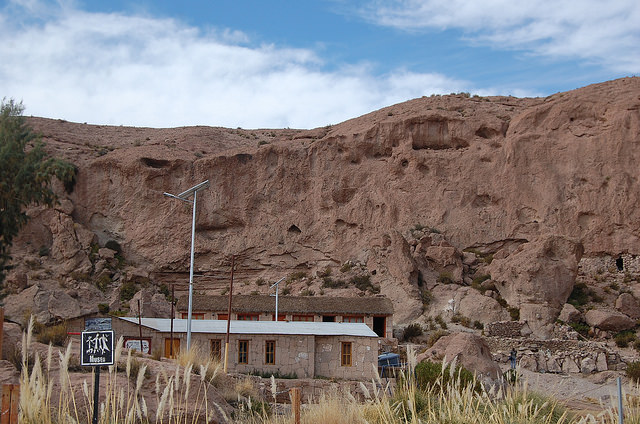
“But I only wanted to sit down and eat ‘cazuela’ (traditional stew made with meat, potatoes and pumpkin) and steak,” she said.
On their return, they both began to implement what they had learned. Charging a small sum of 45 dollars, they installed the solar panel kit in homes in the village, which are made of stone with mud roofs.
The community now pays them some 75 dollars each a month for maintenance, every two months, of the 127 panels that they have installed in the village.
“We take this seriously,” said Luisa. “For example, we asked Enel not to just give us the most basic materials, but to provide us with everything necessary for proper installation.”
“Some of the batteries were bad, more than 10 of them, and we asked them to change them. But they said no, that that was the extent of their involvement in this,” she said. The company made them sign a document stating that their working agreement was completed.
“So now there are over 40 homes waiting for solar power,” she added. “We wanted to increase the capacity of the batteries, so the panels could be used to power a refrigerator, for example. But the most urgent thing now is to install panels in the 40 homes that still need them.”
But, she said, there are people in this village who cannot afford to buy a solar kit, which means they will have to be donations.
Despite the challenges, they say they are happy, that they now know they play an important role in the village. And they say that despite the difficulties, and the extreme poverty they saw in India, they would do it again.
“I’m really satisfied and content, people appreciate us, they appreciate what we do,” said Liliana.
“Many of the elders had to see the first panel installed before they were convinced that this worked, that it can help us and that it was worth it. And today you can see the results: there’s a waiting list,” she added.
Luisa believes that she and her cousin have helped changed the way people see women in Caspana, because the “patriarchs” of the council of elders themselves have admitted that few men would have dared to travel so far to learn something to help the community. “We helped somewhat to boost respect for women,” she said.
And after seeing their work, the local government of Calama, the municipality of which Caspana forms a part, responded to their request for support in installing solar panels to provide public lighting, and now the basic public services, such as the health post, have solar energy.
“When I’m painting, sometimes a neighbour comes to sit with me. And after a while, they ask me about our trip. And I relive it, I tell them all about it. I know this experience will stay with me for the rest of my life,” said Luisa.
This reporting series was conceived in collaboration with Ecosocialist Horizons. Edited by Estrella Gutiérrez/Translated by Stephanie Wildes
First comprehensive Tree of Life illustrates relationships between 2.3 million species
How did life on Earth go from simple single-celled organisms to the incredibly complex human body? A number of attempts have been made to build an evolutionary ‘tree of life’ that connects the organisms on the planet, but until now, there has been no single comprehensive tree of life assembled. However, thanks to a multi-year grant from the U.S National Science Foundation, a collaborative effort from researchers at 11 institutions has produced an initial draft of this audacious project, which includes some 2.3 million species, called the Open Tree of Life.
The Open Tree of Life builds on the work of previous researchers, who have created some tens of thousands of smaller ‘trees’ for individual branches, and the result is a massive digital resource that aims to connect the threads of millions of species on Earth. The project is open-access and editable, which means that not only can anyone view the data, but can also edit or add to it, somewhat like a Wikipedia for evolutionary relationships.
“Evolutionary trees, branching diagrams that often look like a cross between a candelabra and a subway map, aren’t just for figuring out whether aardvarks are more closely related to moles or manatees, or pinpointing a slime mold’s closest cousins. Understanding how the millions of species on Earth are related to one another helps scientists discover new drugs, increase crop and livestock yields, and trace the origins and spread of infectious diseases such as HIV, Ebola and influenza.” – Duke University
Lead by principal investigator Karen Cranston of Duke University, the Open Tree of Life project is based on almost 500 previously published trees, and is significant for a couple of reasons, not the least of which is its sheer size and scope, because while many other evolutionary trees have been created, many of them have not been available previously in a digital format for download or analysis.
By making this data readily accessible and editable, it is hoped that this work will help researchers to “fill in the gaps” between what we know and what we don’t know, and to clarify and resolve conflicts in certain branches of phylogeny. It will also serve as a starting point for adding new species as they are discovered and named.
“Twenty five years ago people said this goal of huge trees was impossible. The Open Tree of Life is an important starting point that other investigators can now refine and improve for decades to come.” – Douglas Soltis of the University of Florida, co-author
The Open Tree of Life is free to browse and/or download at https://tree.opentreeoflife.org, and the source code is available at GitHub. An article on the project was recently published at the Proceedings of the National Academy of Sciences of the United States of America (PNAS): Synthesis of phylogeny and taxonomy into a comprehensive tree of life. Six of the authors also took part in an AMA (Ask Me Anything) event on Reddit yesterday, fielding many questions about the project.
Please enable JavaScript to view the comments.
Naturally occurring ‘GM’ butterflies have wasp genes
Things are getting freaky in the critter world. Researchers from Spain and France have discovered genes from parasitic wasps present in the genomes of many butterflies. The results of their study reveal that even the iconic monarch contains naturally produced GMOs.
Say what?!
It all seems to have started with the particular habits of parasitic braconid wasps. These guys (well, females actually) lay their eggs inside caterpillars and inject a “giant virus” named bracovirus to trip up the caterpillars’ immune response. Proving once and for all that truth really is stranger than fiction, this nifty trick allows the virus to integrate into the DNA of the caterpillars and control caterpillar development, allowing the wasp larvae overlords to colonize their host.
The bracovirus genes were found in the genomes of several species of butterfly and moth in addition to monarchs, including silkworms and pests such as the Fall Armyworm ( Spodoptera frugiperda) and the Beet Armyworm ( Spodoptera exigua).
And the genes found within are not just remnants, it appears that in fact, they play a protective role against other viruses known as baculoviruses. In addition, remarkably, the genes weren’t exclusive to the wasp virus, some of them originated from the actual wasp. In the armyworm species of moths, the researchers found genes that are closely related to genes from hymenoptera, including the honey bee.
Proponents of producing GM insects might latch on to this as an argument in favor of their work – that GM insects already exist in nature, so it’s a natural thing to do. But in showing fluidity of genes between species, the study really provides more ammunition for those opposed. For example, if insecticide resistance genes were to be artificially introduced into wasp species for biological control of other pests, it could lead to accidental transmission of this resistance to the target pests. And then what? I know, let’s not try it and see what happens.
On MNN: 8 of the cutest toxic caterpillars
Please enable JavaScript to view the comments.
The Soil Will Save Us: A Manifesto For Restoring Our Relationship With The Land
Article originally published on www.soilfoodweb.com/article What if we could reduce greenhouse gas emissions and grow enough food to feed our ballooning population using resources we already have? Kristin Ohlson, author of The Soil Will Save Us, thinks we can do just that. And like a growing number of scientists, farmers, and good food advocates, she …



